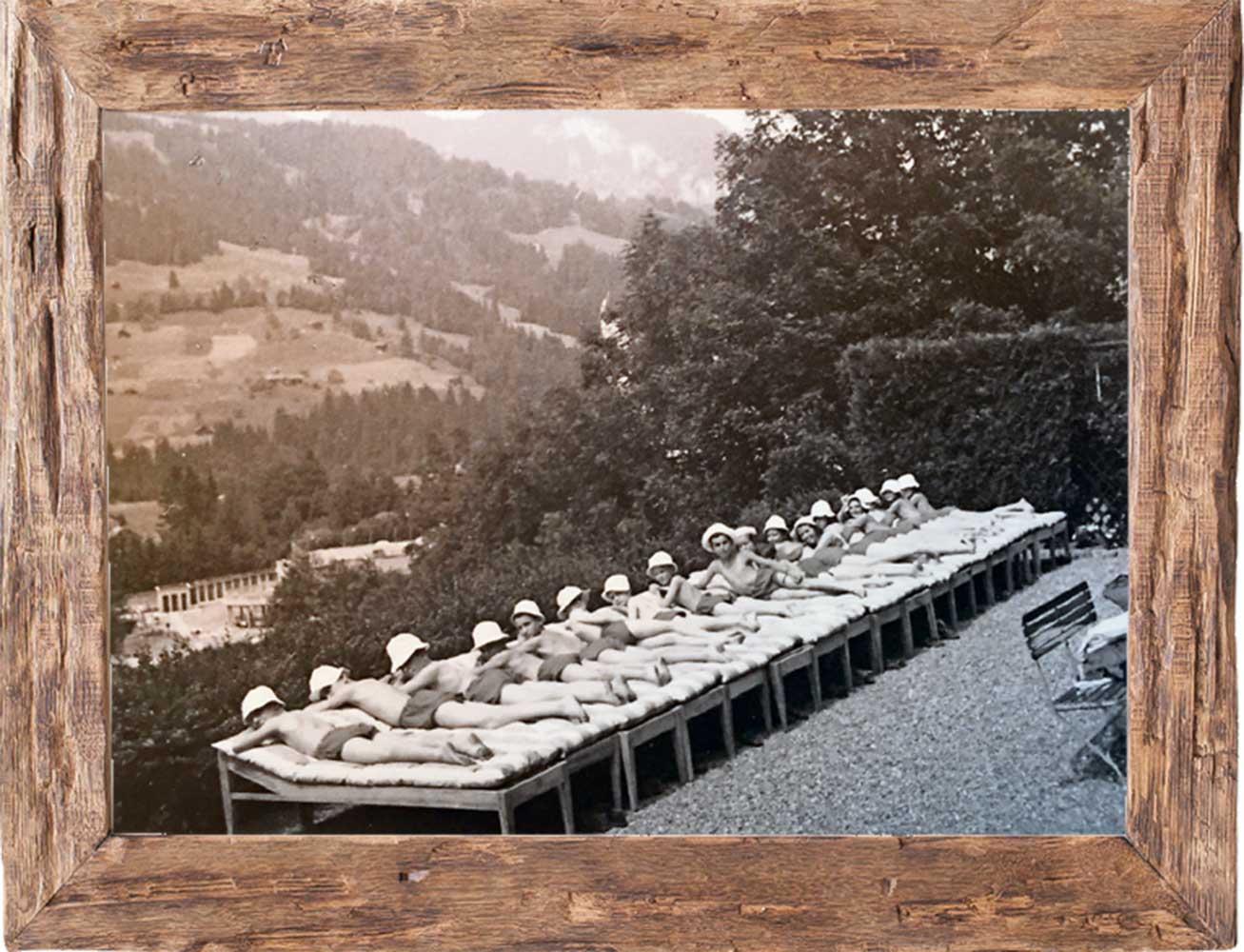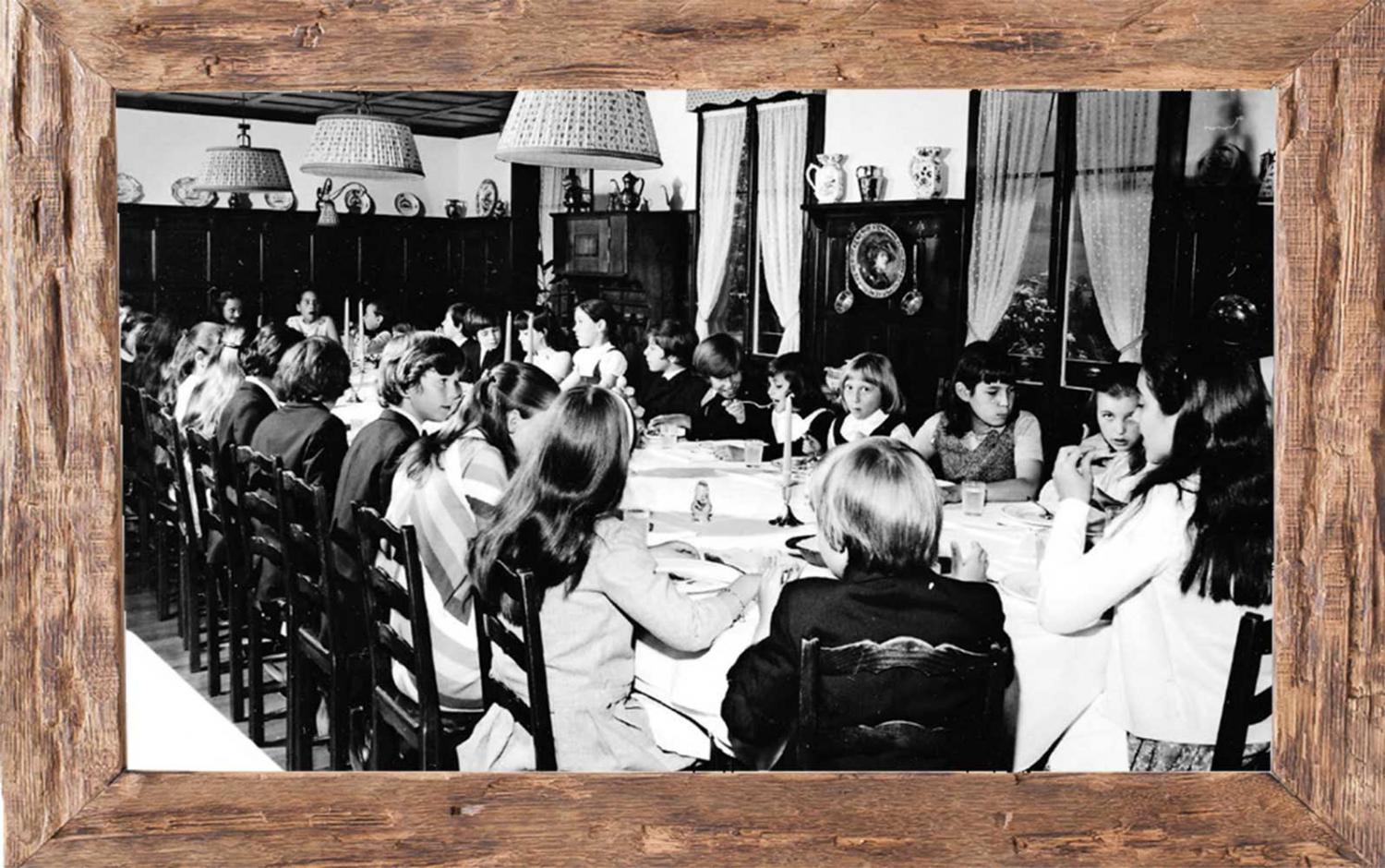Life at Le Chalet Marie-José
10.02.2020 Gstaad Living, From the Archives, Marie José College, Gstaad Living, Traditions, Education, Private SchoolsLife at Le Chalet Marie-José was very strictly organised. It evolved over the decades but the school never lost touch with its roots. Having started as a sanatorium, Le Chalet Marie-José maintained a strong focus on health and physical fitness, its two founding principles.
A few practices that were kept until the 1970s do indeed evoke images of a sanatorium. But culture and education were held in high regard, too, and all of this was organised within tight schedules and unshakeable rules. If you were a good fit, the experience most likely turned out to be positive. If you did not conform, things were undoubtedly less pleasant.
Mens sana…
A large part of the day was spent outdoors. What good was the healthy climate in the Swiss Alps if one did not spend time breathing the fresh mountain air? Consequently as many activities as possible took place outside.
Every morning from 10am the children were busy moving their bodies. The list of activities seems endless. In winter they went skiing, ice skating, played hockey, or went tobogganing. In summer, the region provided ample opportunities for the students to hike, swim, and play tennis. There were alpine excursions with picnics and outdoor games near the school. Thursdays were reserved for longer expeditions up the Rubli, Moléson, or a long hike from Sanetsch to Sion for example.
This may come as no surprise for a school in Gstaad. However, the discipline with which the outdoor activities were scheduled show their importance at the school. Whenever possible classes were also held outside. A small pavilion with an open front provided space for about a dozen pupils. A former teacher remembers the challenge of balancing five full inkpots to the classe de plein air, as it used to be called.
The outdoor siesta was also a fixture in the daily schedule, although it was a siesta in name only. Pupils had to spend half an hour on their backs, then turn over and spend the next half hour on their tummies. During this cure d’air et de soleil no talking and no fidgeting was allowed – which did not stop pupils from talking and fidgeting, of course!
Mind your manners
It was the school’s responsibility to make sure the pupils were healthy. It was also the school’s responsibility to instil manners into the young minds and hearts. Or so it was determined by Ms Racine. Doubtless, as head of the school she must have felt an enormous pressure given the illustrious family trees of the children in her care. As a result, rules were strict and punishments inevitable.
The rulebook had to be followed to the letter and the central role played by physical exercise meant that some pupils had a hard time. The fact that any breach was strictly punished did not make it easier. Young ones who wet their bed, children who struggled to follow the vigorous outdoor programme, or even tough-minded characters who naturally opposed authoritative figures were not natural fits.
For many – and this includes students and employees alike – the institute was too strict and the punishments on the young children too harsh. At least in one point this approach was fair: all children were treated the same. Whether they were royal offspring, came from rich industrial families or were the descendants of showbiz celebrities, the same rules and consequences applied to everybody.
One of the punishments for disobedience is now generally remembered with a smile. Each day the children changed into their evening dress for dinner: girls wore beautiful dresses and did their hair; boys wore a jacket and tie. Any students caught misbehaving or cheating in class were not allowed to change for dinner and thus had to show up in their day clothes.
On another note: pupils knew they had to finish their dinner. If they did not, the leftovers were served for breakfast the following day. Although, in view of the alternative – porridge – leftovers from dinner may not always have been a bad choice…
Opportunities
It was not all gloomy, though! The children received a sound education in a wide variety of subjects, even Latin. Musical education was also a major part of life at Marie-José. Students enjoyed the free time they were allowed to spend outside. The boys were known to build huts in the nearby woods and teamed up ‘against’ the girls. Mixed teams played football and other games. Many a first kiss must have taken place outside the walls of Marie-José.
Amongst the highlights were the plays performed at Christmas and at the end of the school year. For weeks beforehand preparations were underway, and costumes prepared. Every play was a great event for the staff, the children and the parents, who joined the audience the night before collecting their children. The excitement of seeing their parents for the first time after months and of returning home the following day must have made these performances even more special for the children.
How to summarise life at Marie-José? It was strict but good. Demanding and rewarding. It imposed restrictions and offered opportunities. Which side prevailed depended on various factors: how long you stayed, a few weeks over the summer or the whole year; whether you boarded or were a day student; whether you were happy to be surrounded by other children 24/7 or preferred a little solitude from time to time; and how adaptable you were to fit into that tight grid, which could be a source of joy and sorrow.
Markus Iseli







